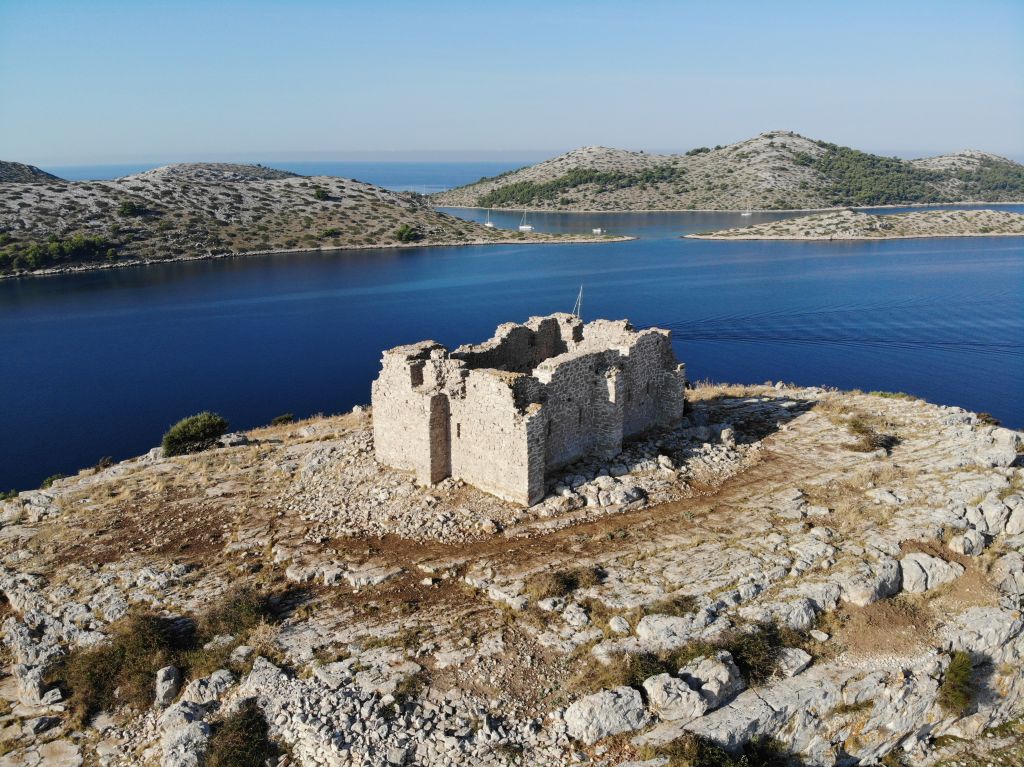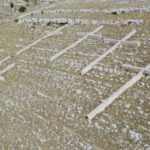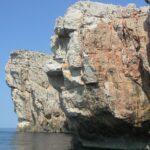Nestled amidst the tranquil Kornati Islands, the Tureta Fortress stands as a timeless sentinel, guarding the secrets of a bygone era. Constructed in the 6th century under Emperor Justinian, this ancient bastion once protected the Adriatic coast and its strategic trade routes. Today, the fortress invites travelers to embark on a captivating journey through history, exploring the enigmatic past and vibrant traditions woven within its walls and the surrounding landscape. Join us as we delve into the mysteries of the Tureta Fortress and uncover its intriguing secrets.
Content
Peering into the Enigmatic Past
The Architecture of Tureta Fortress
Limes Maritimus
Probably constructed in the 6th century under Emperor Justinian, the Tureta Fortress protected the coast and controlled navigation in this strategic Adriatic region. Tureta remains a rare undestroyed fortress from that era, its isolation shielding it from potential plunderers. Today, the fort is a silent sentinel, its walls whispering tales of ancient conflicts and hidden secrets.
The Adriatic Sea, bathed in golden sunlight, preserves the ancient Justinian “limes maritimus” legacy – a testament to Byzantine architectural and strategic mastery. This 6th-century network of fortresses and watchtowers safeguarded trade routes and coastal territories. At its peak, the Tureta was part of an extensive fort network stretching along the Adriatic coast, symbolizing imperial power through its optical visibility and impressive architecture.
The primary purpose of the limes maritimus was to facilitate navigation along the coast. Sailors typically took a day to sail from one fortress to another. These fortresses served as scouting and signaling points, guiding sailors through the ancient waters. When guards spotted ships, they would ignite a fire, acting as a beacon for the mariners. To ensure access to essential water sources, forts were often constructed near them. This is evident in the presence of the fertile Tarac field and the only pond on Kornat island, both located at the foot of the Tureta Fortress.

Peering into the Enigmatic Past
Beneath the Tureta Fortress, the land brims with historical treasures that hold the key to understanding the fortress’s original purpose. Ancient structures and artifacts concealed within the landscape shed light on the lives of those who once inhabited this strategic location. As researchers meticulously examine these remnants, they gradually unravel the fortress’s role within the Byzantine Empire’s coastal defenses and the captivating tales it whispers.

Nestled in this history-rich setting is a quaint church, the site of the vibrant Feast of Our Lady of Tarac, celebrated on the first Sunday of July.
This humble sanctuary, built in the late Middle Ages, replaced a larger Byzantine-era church, indicating the presence of a substantial community in the area.

The enigmatic ruins of another building lie near the church, shrouded in a pastoral sheep pen. Current theories suggest that these structures, along with the ancient coastal embankment and Tureta Fortress, may be part of a smaller Benedictine monastery complex.

Therefore, the Tureta, with its commanding vantage point, could have been a monastery fortress, vigilantly overseeing the port, a monastery facilites with the church, fertile Tarac field, and the expansive sea – all crucial elements warranting protection in its strategic position.
The monastery forts served dual roles, safeguarding inhabitants and resources while watching for potential threats. Despite their often modest dimensions, these forts have been a ubiquitous feature of the Byzantine world, serving as a crucial component of the empire’s defense and navigation system. They were all part of the same whole, communicating from the periphery towards the center.

The Architecture of Tureta Fortress
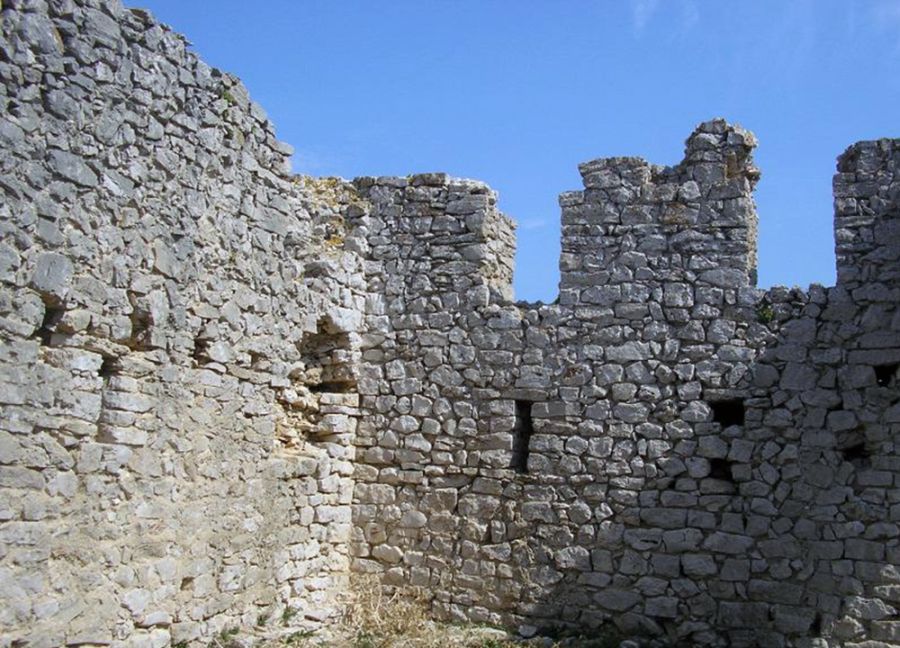
Drawing from the scholarly work “Archaeological Heritage of Kornati” by Irena Radić Rossi and Tomislav Fabijanić, the architecture of Tureta Fortress showcases the brilliance of Byzantine craftsmanship.
Tureta Fortress, a rectangular marvel, measures approximately 10 x 5 meters internally. Its southern wall showcases an eastern entrance, while the walls boast an impressive thickness of 1 meter, bolstered by eight sturdy supports. Square slots for wooden beams on the walls indicate the presence of a ground floor, first floor, and ceiling. The ground floor features nine narrow ventilation openings, while the upper floor has eight windows. Slots on the building’s outer side at a slightly higher level hint at the use of wooden scaffolding during construction or the existence of a porch.

Functionally, the ground floor served as a storage area with ventilation holes, while the upper floor provided living quarters. Like other Byzantine edifices, the flat roof offered a strategic vantage point for defenders during peril.
In sum, the Tureta fortress boasts a functional design, with the ground floor dedicated to storage and the upper floor providing living space. The flat roof, a hallmark of Byzantine architecture, served as a strategic advantage for defenders during the conflict, emphasizing the fortress’s dual purpose as both a military bastion and a residential structure.
Tureta Fortress Abandonment
The abandonment of the Tureta Fortress remains shrouded in mystery. Still, the decline of Benedictine monasticism in the 12th and 13th centuries likely played a significant role. The era was marked by turbulence, with the rise of Venice, the waning of Byzantium, and the Croat’s incursion into the Adriatic dramatically affecting the Kornati region. Yet, the enduring presence of Tureta Fortress stands as a testament to the area’s rich history and cultural legacy.
How to Reach Tureta Fortress
Tureta Fortress lies amid the tranquil coves of Kravljačica and Bijela Lučica on Kornat Island. One must first navigate the diverse transportation options available to embark on this captivating journey.

Access to the island of Kornati is exclusively by boat, with the departure port in Murter roughly 20 nautical miles away. From sailing with your vessel to utilizing rent-a-boat agencies or transfer services offered by Kornati accommodation owners, the sailing options are numerous and await your embarkation to the Tureta Fortress.
Hiking to the Fortress
Begin your journey at the Kravljačica or Bijela Lučica cove, where you’ll find trails leading towards the fortress. These nerrow pathways wind through the rugged terrain, offering hikers spectacular views of the Kornati Islands’ stunning landscape. Wear comfortable shoes and bring plenty of water to stay hydrated during your trek.
Boating to the Waterfront
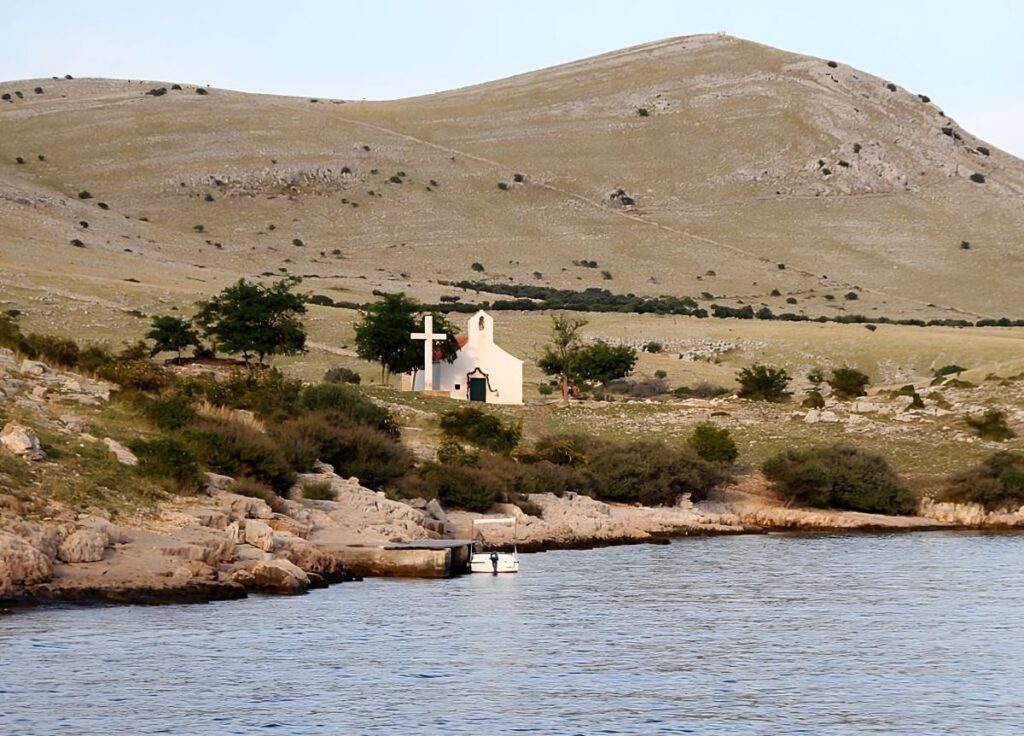
For those who prefer to travel by sea, navigate your boat, kayak, or stand-up paddleboard (SUP) to the tiny waterfront beneath the Tureta Fortress. This charming area provides an ideal launching point for the final leg of your adventure.
Climbing to the Fortress
From the waterfront, embark on a 10-minute uphill hike to reach the top of the hill, where the Tureta Fortress stands proudly. As you ascend, take in the breathtaking panoramic views and imagine the rich history unfolding in this location.
No matter which route you choose to reach the Tureta Fortress; the journey promises to be a memorable experience that will leave you with a deeper appreciation for the captivating Kornati Islands and their ancient heritage.
As the sun sets over the Adriatic, the Tureta Fortress stands as a silent sentinel, its walls whispering tales of ancient battles and hidden secrets. This Byzantine relic, part of the 6th-century “limes maritimus” network, is a testament to a long-lost empire’s architectural and strategic prowess. Nestled within a possible monastic complex, the fortress once protected both the inhabitants and the resources of the Kornati Islands. Today, visitors can retrace the footsteps of monks and soldiers, embarking on a journey to uncover the enigmatic past of this enduring fortress. Surrounded by azure waters and intriguing landscapes, Tureta remains a vibrant symbol of history, resilience, and the timeless allure of the Adriatic coast.
